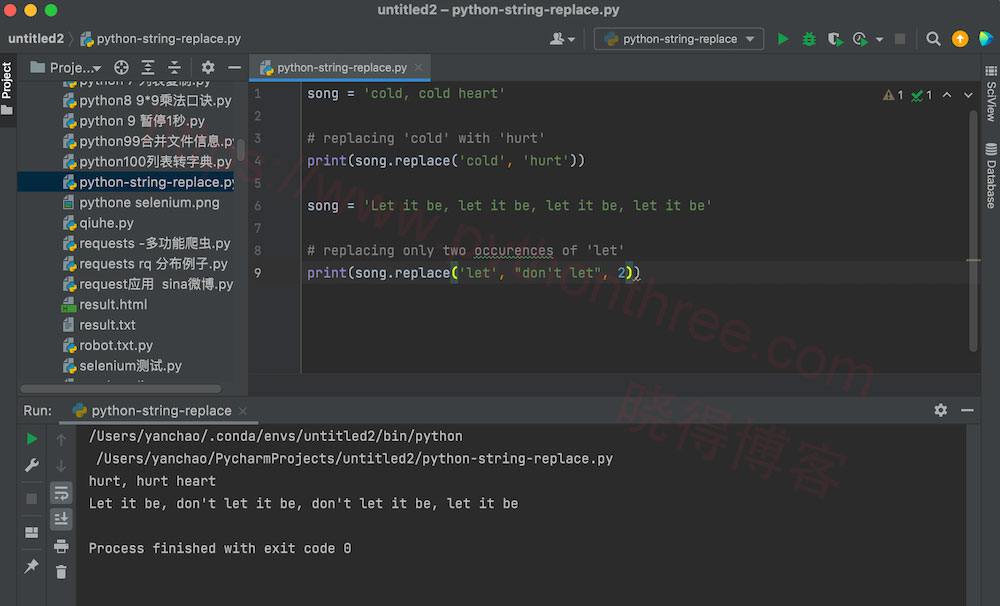Python字符串replace()

Python 字符串方法replace()返回字符串的副本,其中old的出现已被替换为new,可选地将替换次数限制为count。本文晓得博客为你介绍Python字符串replace()。
replace()语法
以下是replace()方法的语法 –
string.replace(old, new, count)
参数
- old – 这是要替换的旧子字符串。
- new – 这是新的子字符串,它将替换旧的子字符串。
- count – 如果给出此可选参数 ,则仅替换第一次出现的计数。(新字符串替换旧字符串的个数)
注意:如果count未指定,该replace()方法将替换所有出现的旧字符串与新字符串。
推荐:Python中json.load()和json.loads()之间的区别
replace()返回值
此方法返回字符串的副本,其中所有出现的子字符串 old 都替换为 new。如果给出了可选参数 max,则仅替换第一个 count 出现。该replace()方法返回字符串的副本,其中老的子字符串替换为新的子串。原字符串不变。

如果老的未找到子字符串,它返回原始字符串的副本。
song = 'cold, cold heart'
# replacing 'cold' with 'hurt'
print(song.replace('cold', 'hurt'))
song = 'Let it be, let it be, let it be, let it be'
# replacing only two occurences of 'let'
print(song.replace('let', "don't let", 2))如果老的未找到子字符串,它返回原始字符串的副本。
hurt, hurt heart
Let it be, don't let it be, don't let it be, let it bereplace()示例

song = 'cold, cold heart'
replaced_song = song.replace('o', 'e')
# The original string is unchanged
print('Original string:', song)
print('Replaced string:', replaced_song)
song = 'let it be, let it be, let it be'
# maximum of 0 substring is replaced
# returns copy of the original string
print(song.replace('let', 'so', 0))输出:
Original string: cold, cold heart
Replaced string: celd, celd heart
let it be, let it be, let it be总结
以上是晓得博客为你介绍的Python字符串replace(),希望对你学习python有帮助,如您是新手,也可参考零基础如何开始学习Python。
推荐:Python 3 教程









